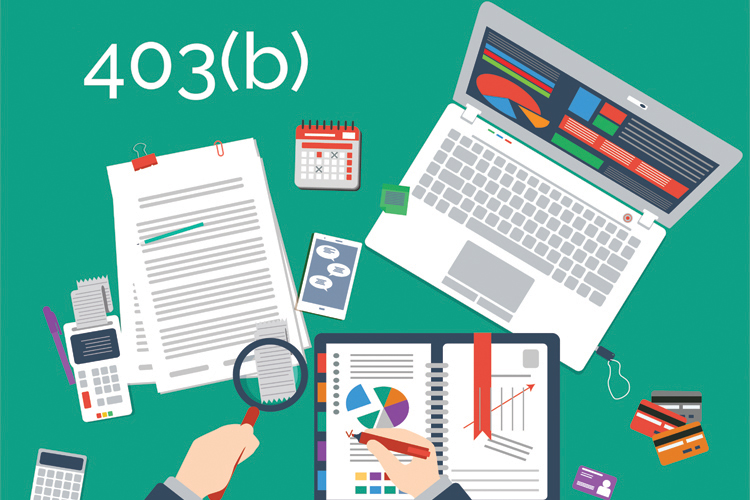“It’s time for a new conversation about retirement because now people are saying that they’re interested in very personal things.”
Private Sector Employees Can Invest for Retirement With a 401(k) Plan
Years ago, it was common for employers to offer a pension plan to support workers after they retired. Over the past few decades, however, most employers have stopped offering pensions, and many offer a 401(k) retirement plan instead.
A 401(k) plan is a qualified plan that includes a feature allowing an employee to elect to have the employer contribute a portion of the employee’s wages to an individual account under the plan. The underlying plan can be a profit-sharing, stock bonus, pre-ERISA money purchase pension, or a rural cooperative plan. Generally, deferred wages (elective deferrals) are not subject to federal income tax withholding at the time of deferral, and they are not reported as taxable income on the employee’s individual income tax return.

With a 401(k) plan, you are in charge of your retirement account. That means you are in charge of how much money you will have in retirement. While that may seem intimidating, the biggest step is simply to start contributing to your plan. And remember, you don’t have to go it alone. A financial planner can help you make decisions that reflect your goals and risk tolerance.
How a 401(k) plan works
In general, a 401(k) is a retirement account that your employer sets up for you. When you enroll, you decide to put a percentage of each paycheck into the account. These contributions are placed into investments that you’ve selected based on your retirement goals and risk tolerance. When you retire, the money you have in the account is available to support your living expenses.
Your contributions are tax-deferred
Your 401(k) contributions are deducted right from your paycheck and go directly into your account before taxes are withheld. So if your salary is $50,000 a year and you contribute $3,000 to your 401(k), you will pay income tax on $47,000 next April instead of the entire $50,000 that you earned. When you withdraw money from your account in retirement, it will be subjected to taxes. But since you’ll be retired, you’ll possibly be in a lower tax bracket. Consider taking full advantage of the tax-deferral by contributing the maximum amount allowed by your company. Check with your human resources department for limits and details. Please keep in mind that all investing involves market risk, including the possible loss of principal.
You may get matching contributions from your employer
Your company may match a certain percentage of your 401(k) contributions – most do. For example, if your company matches 0.5% for every 1% you contribute up to 6%, that translates into an extra 3% in your account if you take advantage of the entire match. With the example above, your $3,000 contribution plus your employer’s match would add $4,500 to your 401(k). (Your company will have rules about when the entire match is yours. Get the details from your employer.)
You can avoid penalties by leaving your money in your 401(k)
Since 401(k)s are designed to help you save for retirement, there are penalties for taking your money out early. You’ll owe income taxes on the total amount and, if you’re younger than 59½, also may owe a 10% early-withdrawal penalty. Plus, the IRS requires your employer to withhold 20% of your account value to pre-pay at least part of the taxes you’ll owe.
A 403(b) plan (also called a tax-sheltered annuity or TSA plan) is a retirement plan offered by public schools and certain 501(c)(3) tax-exempt organizations. Employees save for retirement by contributing to individual accounts. Employers can also contribute to employees’ accounts.
Employees of companies in the private sector have 401(k) plans to help build their retirement savings. But what exactly is a 403(b) plan? If you’re a school teacher or work for a tax-exempt organization, a 403(b) plan is a tool that may help you reach your retirement goals. 403(b) retirement plans are also known as tax-sheltered (or tax-deferred) annuities.

Here are a few things to consider about the 403(b) option:
Who is eligible?
Tax-deferred 403(b) plans are designed for employees of public schools, colleges and universities, churches and other religious organizations. Employees of certain other tax-exempt, non-profit organizations such as charities or certain hospitals can also participate in a 403(b) retirement plan.
Why participate?
A 403(b) plan lets you set aside a portion of your salary in an employer-sponsored account to save for retirement. Some employers may also match your contribution. That’s like getting free money for participating in your retirement plan.
You don’t pay taxes on your contributions to the plan, or on any earnings the account accumulates until you withdraw the money – which ideally happens when you’re retired. And by then you may be in a lower tax bracket – so there are potential savings every step of the way.
Professional advice
With a 403(b) retirement plan, you can typically invest in fixed annuities, variable annuities or mutual funds. Ask your advisor to help you choose investments that best meet your retirement objectives. Also remember that investing involves market risk, including possible loss of principal, and there’s no guarantee that your investment objectives will be met.
Enrolling in your employer’s 403(b) retirement plan is a big step in preparing for your future. You can start small − the important thing is that you start investing now so your money has time to potentially grow. If your employer doesn’t offer a 403(b) plan, find out if they have another kind of retirement plan. Or ask your investment professional about other ways to start investing for retirement.
Early withdrawals – and why to avoid them
Because 403(b) plans were created to help you save for retirement, there may be harsh penalties for withdrawing money early, including:
- Income taxes on the total withdrawal
- A 10% penalty if you’re younger than 59½
- 20% federal income tax withholding – unless the entire amount is rolled over to another qualified retirement plan or IRA
Prepare for Retirement With a 457 Plan Designed for Government and Non-Profit Workers
Deferred compensation plans, also known as 457 retirement plans are designed for state and municipal workers and employees of some tax-exempt organizations. If you participate in a 457 plan, you can contribute a portion of your salary to a retirement account. That money and any earnings you accumulate are not taxed until you withdraw them.
The difference between a 401(k) and a 457 retirement plan:
Although they’re alike in many ways, there are some differences between 401(k) and 457 plans, particularly when it comes to early withdrawal penalties and minimum required distributions.
With a 457 retirement savings plan:
- There isn’t a minimum retirement age
- There isn’t a 10% federal penalty for early withdrawal of funds, although withdrawals are subject to ordinary income taxes
- There is a withdrawal option for unforeseen emergencies that meet certain legal criteria, if all other financial resources are exhausted
- Distributions are available in a lump sum, annual installments or as an annuity
- There is no tax withholding if you leave for a new job and roll over your money into an IRA or your new employer’s 401(k), 403(b) or 457 plan – or if you take regular installments for 10 years or more. (All other distributions are subject to 20% withholding for federal taxes.)

Keep in mind that federal income tax laws are complex and subject to change. Neither Altusnor our representatives give legal or tax advice. Please consult your attorney or tax advisor for answers to specific questions.
A SIMPLE IRA plan (Savings Incentive Match PLan for Employees) allows employees and employers to contribute to traditional IRAs set up for employees. It is ideally suited as a start-up retirement savings plan for small employers not currently sponsoring a retirement plan.
SIMPLE IRA plans can provide a significant source of income at retirement by allowing employers and employees to set aside money in retirement accounts. SIMPLE IRA plans do not have the start-up and operating costs of a conventional retirement plan.

- Available to any small business – generally with 100 or fewer employees
- Employer cannot have any other retirement plan
- No filing requirement for the employer
- Contributions:
- Employer is required to contribute each year either a:
- Matching contribution up to 3% of compensation (not limited by the annual compensation limit), or
- 2% nonelective contribution for each eligible employee:
- Under the “nonelective” contribution formula, even if an eligible employee doesn’t contribute to his or her SIMPLE IRA, that employee must still receive an employer contribution to his or her SIMPLE IRA equal to 2% of his or her compensation up to the annual limit of $275,000 for 2018
- Employees may elect to contribute
- Employee is always 100% vested in (or, has ownership of) all SIMPLE IRA money
- Employer is required to contribute each year either a:
Pros and Cons:
- Easy and inexpensive to set up and operate
- Employees share responsibility for their retirement
- No discrimination testing required
- Inflexible contributions
- Lower contribution limits than some other retirement plans
Contribution Limits and Requirements
- Who Contributes: Employer must contribute and employee may contribute.
- Contribution Limits: Total contributions to each employee’s SIMPLE IRA are limited.
- Filing Requirements: An employer generally has no filing requirements.
- Participant Loans: Not permitted. The assets may not be used as collateral.
- In-Service Withdrawals: Yes, but includible in income and subject to a 10% additional tax if under age 59-1/2. Also, if withdrawals are made within the first two years of participation, the 10% additional tax is increased to 25%.
A SEP IRA is a type of traditional IRA for self-employed individuals or small business owners. (SEP stands for Simplified Employee Pension.) Any business owner with one or more employees, or anyone with freelance income, can open a SEP IRA. Contributions, which are tax-deductible for the business or individual, go into a traditional IRA held in the employee’s name. Employees of the business cannot contribute – the employer does. Like a traditional IRA, the money in a SEP IRA is not taxable until withdrawal.

Who Can Participate in a SEP or SARSEP Plan?
An eligible employee is an individual (including a self-employed individual) who meets all the following requirements:
- Has reached age 21
- Has worked for the employer in at least 3 of the last 5 years
- Received at least $600 in compensation from the employer during the year (for 2018)
An employer can use less restrictive participation requirements than those listed, but not more restrictive ones.
An employer can exclude the following employees from a SEP or SARSEP:
- Employees covered by a union agreement and whose retirement benefits were bargained for in good faith by the employees’ union and the employer
- Nonresident alien employees who do not have U.S. wages, salaries or other personal services compensation from the employer
Set up a SEP-IRA for each employee
A SEP-IRA must be set up by or for each eligible employee. They may be set up with banks, insurance companies or other qualified financial institutions. All SEP contributions must go to traditional IRAs. Employees are responsible for making investment decisions about their SEP-IRA accounts.
You and your employees will receive a statement from the financial institutions investing your SEP contributions both at the time you make the first SEP contributions and at least once a year after that. Each institution must provide a plain-language explanation of any fees and commissions it imposes on SEP assets withdrawn before the expiration of a specified period of time.
Timing of setting up a SEP plan
You can set up a SEP for a year as late as the due date (including extensions) of your business income tax return for the year you want to establish the plan.
